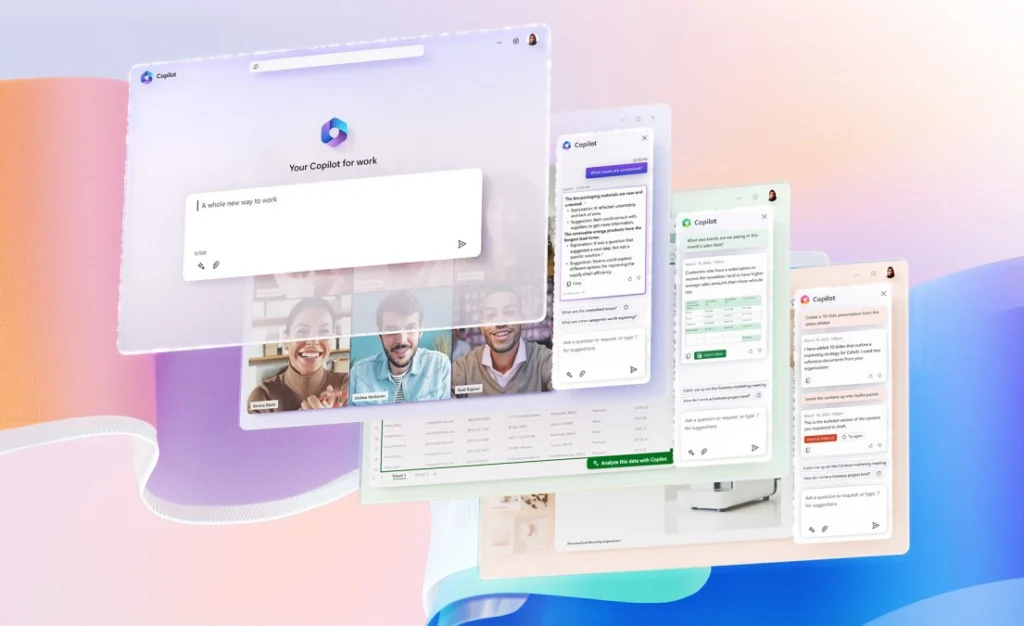I’m at Microsoft Build this week and it is amazing. I’ve been one of the launch analysts for Windows since Windows 95 and I largely owe my career as an analyst to that product. As we approach the launch I’m reminded of the Microsoft of 1995 but this is not only clearly a different Microsoft than it was in 1995, it is a different Microsoft from the one we saw last year.
I think the big takeaways from Build are that Microsoft is no longer even attempting to chase Apple or Google, they may have Amazon chasing them, and its plan to lead the market into another technology revolution. Its cross platform and cloud efforts are now fully intertwined and they are both looking at taking the smartphone where Apple and Google can’t currently go and making it and every other piece of personal technology currently on the market obsolete.
Let’s talk about all of that.
Beating Apple and Google
You can’t chase a powerful company from behind. We saw that with DEC against HP, AMD against Intel, Apple against Microsoft in the 1990s, and Microsoft against both Apple and Google last year. To prevail the leading company needs to really screw up (RCA in the 60s, AT&T in the 70s), the market needs to change—bypassing the firm (AOL in the late 90s), or the challenging vendor needs to change the rules (Apple with MP3 players, smartphones, and—surprisingly—tablets).
Google is clearly pissing off the EU at the moment and is connected to a scandal in the US government which could eventually damage or kill them. The market is looking at a change particularly with where apps run (cloud) and hardware (robotics), and interestingly Microsoft is looking to change the market with Windows 10 and HoloLens.
The parts of Windows 10 that are disruptive are Continuum and HoloLens.
Continuum
What Continuum in Windows 10 does is allow you to transform a mobile device into a PC. Now transforming a tablet into a PC is nothing new. The Surface 3 that Microsoft announced earlier this year is likely the best example of that but it goes back to the concept of a Windows convertible tablet that came to market a decade ago albeit with a design that has the size, weight, performance and battery life that the earlier product lacked.
But what is new is transforming a smartphone into a tablet and changing the user interface to represent the change. This was what was broken in Windows 8 with tablets. In fact the running joke with the development team for Windows 10 is that Windows 8 should have been called Window Hate because you lost scalable overlapping Windows as it tried to force a mobile interface on PCs and folks hated that.
Well with Continuum you get the proper interface for the proper use and that means when you are in PC mode you get a PC Windows (note the “s”) experience. Where this particularly shines isn’t with tablets but with smartphones. With a Windows 10 smartphone you’ll be able to connect the phone to a monitor and get a PC experience from your phone. Remember we have quad core phone processors now and the capability of our phones exceeds the performance of most of the laptops we had a just a few years ago.
If you could have your full PC in your pocket and had a monitor, mouse, and keyboard where ever you were traveling you wouldn’t need a laptop. This solution does suggest the perfect product might be an elegant laptop dock for the Smartphone which had all of this built in and also contained a battery to handle the extra power that would be required.
With the right accessories you wouldn’t need a tablet, laptop, or desktop PC, you’d just need your smartphone. Even without sync all your stuff would be available to you all the time regardless of whether you were on a network or not (oh and one wireless data plan). And if someone stole the laptop accessory all they’d have is the components they wouldn’t have your data.
HoloLens
Goes far farther. HoloLens could very well be the next generation of personal computing. With a voice/gesture interface it puts a screen onto anything you can see including the air in front of you. It is a creative way to solve the holographic problem as it uses a head mounted holographic computer (fully contained) to provide this capability. It is a connected device and in its ultimate form you wouldn’t need a smartphone, tablet, or PC–you’d just need the HoloLens.
This puts the “D” in disruptive and is arguably the most innovative attempt to displace all of our personal technology yet attempted—going far beyond prior wearable technology attempts. Short of hard-wiring your head, which undoubtedly is coming, if successful this device would make both Apple and Google Android obsolete.
By the way, I should add, just a few months ago I flew up to Microsoft to see this product and it was a science experiment. There were some mockups of final hardware but it was nowhere near finished. At Build this week, Microsoft showcased a product that was closer to being market ready than Google Glass was. That’s pretty revolutionary in and of itself.
Wrapping Up: Spinning the Market
Microsoft at Build is starting a technology revolution. It is beginning a movement that could initially make your PC and tablet obsolete and eventually make every piece of computer based hardware you own obsolete. Its goal isn’t to chase Apple or Google anymore, at least with regard to client devices, and instead make these companies efforts obsolete. Now that’s the way you compete and the irony is that Microsoft is using Steve Jobs’ own strategy which has to make you wonder what the hell the Apple guys are thinking?
- Why Intel’s FAB and Foundry Expansion May Save the Company - April 19, 2024
- Intel Vision: How the AI Wave Could End the Wintel Age - April 12, 2024
- With AI, Communication Skills Become Vastly More Important - April 5, 2024




Ever since I got a Windows phone I’ve seen this potential (Continuum) as something I would definitely want and use, and wondered why no one had done it already. Hololense, on the other hand, leapfrogs over conventional ideas of VR. The potential for gaming alone is revolutionary. For applications like medicine and engineering, it is life-changing.
I like this new Microsoft. I’m having a hard time remembering the last time they seemed this creative and interesting. They will surely make some missteps, big ones even, but this is the kind of company they need to become in order to have the big successes they’ll need to maintain their place as a staple in the industry.